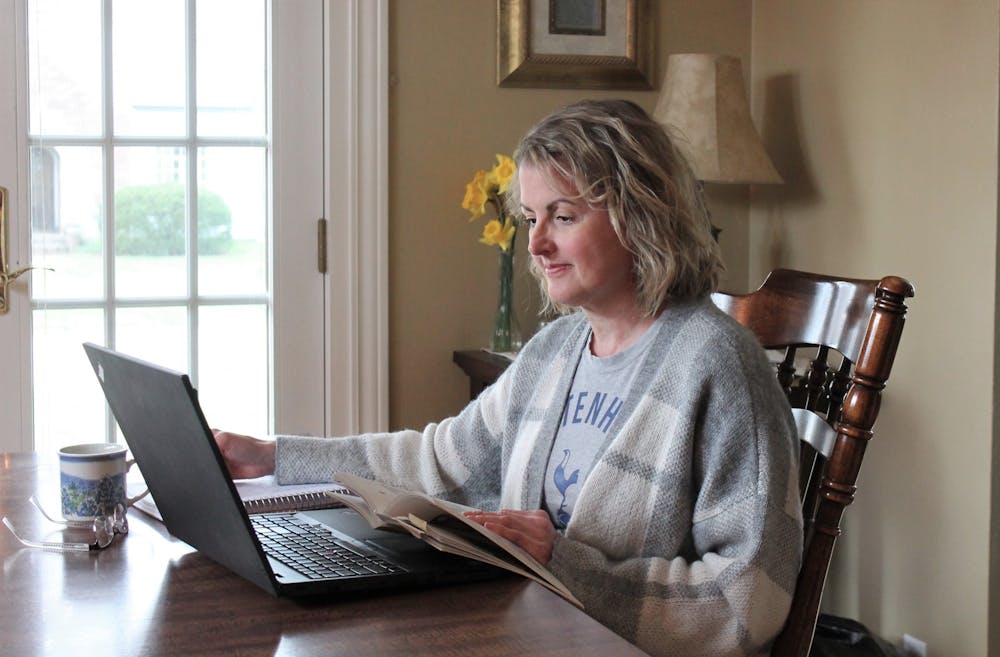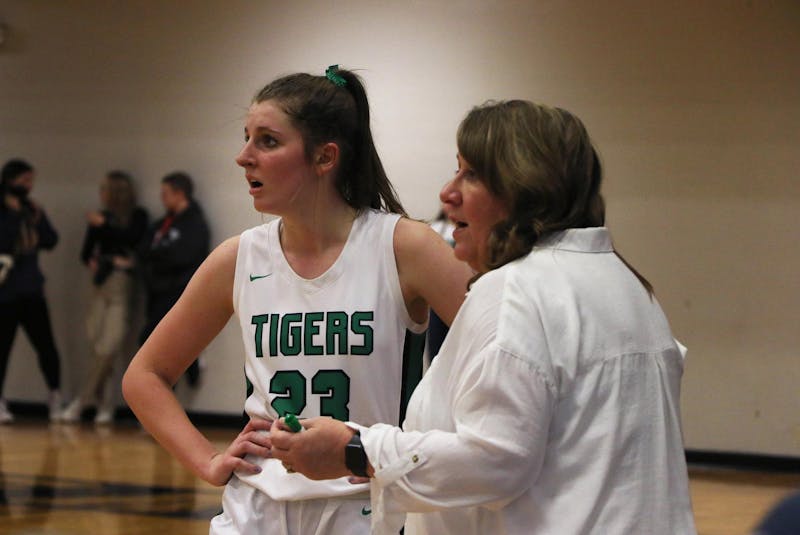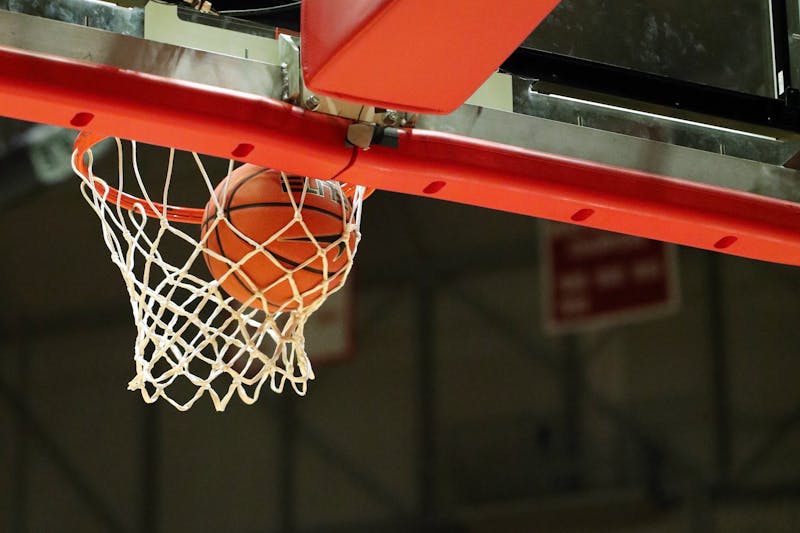Visitors observing, admiring and reflecting on a piece of art — evoking a sense of satisfaction in the artist — is one of many things that has to be done virtually amid the COVID-19 pandemic.
The exhibition showcasing the design projects of students in a Computer Science 120 course, historically held in the Atrium of the Art and Journalism Building, had to be moved entirely online this semester.
People could view the artwork created by the students on the art show’s website. If they wished to speak with the artist, they could do so through a WebEx video conference call where some of the students were present. Judges, who would have offered their feedback in person, did so via Google Forms.
McKenna Kaczanowski, a student in the class, said she’d have preferred an in-person show but was nevertheless grateful for having any exhibition at all.
“This is just the situation that we’re in, and I think it’s just really great that professors are trying to make the best of it and still give us this show even though we can’t be there in person,” the junior applied mathematics major said. “I think everyone is just trying to make it work as best as they can right now, and I think that’s great.”
Ball State’s students and faculty are some of the many people worldwide who have had to transition to online platforms for their work, education and other activities.
For Dave Largent, associate lecturer of computer science who teaches Kaczanowski’s class, while the logistics of setting up a video conference call has been easy, the challenges his students face have been having access to it.
These challenges, Largent said, include having reliable internet and good internet bandwidth and adjusting to the schedules of students ever since they moved back home.
“I’d like to think I’m still being effective. We’ll see,” he said. “I do miss the physical interaction with people on a regular basis.”
Largent said walking into a classroom with 20 to 30 students is a little different than sitting in front of a screen and talking to them hoping they can hear him well and have no issues with using technology.
“There is something just from a human standpoint about physically being around people, being able to interact with, that comes pretty close on a WebEx sort of thing … but just not quite the same,” he said.
There’s a place for both virtual and in-person learning, Largent said. They could use something like WebEx to connect and work through problems students might have virtually.
“There’s no reason I couldn’t do this in the future, even if we’re holding face-to-face [classes], when the students are working on it in the evening and trying to solve them,” he said. “Rather than doing a series of emails back and forth, why don’t we just open up a video chat and share the screen.”

Dave Largent, associate lecturer of computer science, works at his desk April 10, 2020 from home. Due to classes being moved online and Ball State buildings being closed for the semester, Largent organized the semesterly art exhibit for students in his CS120 class virtually. Dave Largent, Photo Provided
Several classes that were moved online weren’t designed to be online classes, like the English education classes of Pamela Hartman, associate professor of English.
“As well as we're functioning, if I hadn't have gotten to the place I was in the semester, I think this could have been a potential disaster,” Hartman said. “But, as far as what I am doing, I think it's going surprisingly well.”
Some things that are stressful for her include figuring out if her Wi-Fi connection is strong enough, if her house has a quiet enough environment for her class, if her cat might run across her screen and dealing with the constant distractions while working from home.
The bigger stress, she said, is figuring out how to manage being totally quarantined and keeping a routine at the same time.
While Hartman has simplified or changed her classes’ assignments, she said, her students feel overwhelmed because some of their classes don’t meet virtually, many of them feel they lack the support they might have otherwise had and some professors haven’t made modifications to assignments.
Apart from spotty internet, she said other issues brought to her attention include one student having to leave the university for mental health reasons, students having to move out of their dorms in the middle of the semester and them not having jobs to pay their bills.
While they don’t outweigh the stresses, Hartman said, positives have come out of virtual learning.
“It's pushed me to kind of think outside the box,” she said. “In a certain way, that's enjoyable. I mean, it was totally stressful at first, but once you get into the groove, it’s like, ‘Oh, this could work.’ It's made me think in different ways about how I teach class, my assignments ... and also maybe push myself to learn a lot more technology.”
Hartman said a lot of her classes focus on using art to teach literacy. As she and her students tried brainstorming creative ways to achieve that objective, her students made her try out many apps — including TikTok.
“My daughter told me what it was a few weeks ago, but I had never used it and had no interest in it,” she said. “I felt silly, you know, trying to figure it out, and then my students made me make one like on the spot in class.”
While she would never build using these apps into her classes, she said, her students, some of whom hope to be teachers, got a glimpse of what it’s like to deal with emergencies when they have to move their classes online.
“Hopefully, it’ll only be like a snow day here and there,” Hartman said. “Not, you know, three months of their school year.”
Online learning isn’t the only thing that has changed for students. Organizations, like the Student Government Association (SGA), have also had to resort to virtual weekly senate meetings.
Aiden Medellin, SGA president, said while he doesn’t prefer this over in-person meetings, having WebEx conference meetings has at least brought some kind of normalcy — something he said SGA senators appreciate.
Apart from meetings being more informal that usual, he said they now follow a less stringent version of Robert’s Rules of Order — the parliamentary procedure utilized at several formal meetings.
“Things aren’t quite the way they were when we were meeting physically, but we’re still doing what we can,” Medellin said. “We’re trying to make it as serious as possible because we don’t want people to lose their passion or they’re ability to do things.”
Using virtual conferencing to accomplish SGA’s weekly meetings, he said, is “the best worst thing we could come up with,” adding, “this is as good as it gets.”
Documenting the lives of students amid the COVID-19 pandemic is something students in professor of sociology Melinda Messineo’s sociology capstone course have undertaken.
As part of the class, Messineo said, they were doing personal reflections on their own lives — auto ethnographies — and doing interviews with two people in the Muncie community about their experiences during the pandemic. This will ultimately be part of the larger collection being archived by Ball State’s Center for Middletown Studies.
Messineo said a lot of the seniors in her capstone class talk about the grief they’ve experienced and the process of going through that grief as they deal with the abrupt end of their college experiences.
She also acknowledged the scale of the transition students have had to make and the disruption it might have caused students due to different professors conducting class differently and students having to adjust to taking online classes.
Through it all, however, she said her students “have overwhelmingly been positive.”
“They talk about how hard it is and how they'd prefer to be face to face, but they're also glad to have the connection, and something to do and the structure of having classes.”
Messineo added, “it's really a gift in a lot of ways that we can still stay in touch.” She said this could be an opportunity for people to try and explore so many things while staying at home.
“I'm imagining a hundred years ago when people were quarantining themselves [during the 1918 flu pandemic] and how much more lonely they all must have felt, and disconnected, and while we're sharing … this horrible and very grievable experience, how the world is coming together in these virtual places in ways that had never been possible before,” she said.
“In our isolation, I can just imagine really creative moments and opportunities for people when we're thinking thoughtfully and reflectively ourselves that there's going to be personal growth that comes from this as well and appreciation for things that I think in our really fast-paced world that we may have lost sight of,” she said. “There could be a tiny silver lining in all this.”
Contact Rohith Rao with comments at rprao@bsu.edu or on Twitter @RaoReports.





The Daily News welcomes thoughtful discussion on all of our stories, but please keep comments civil and on-topic. Read our full guidelines here.